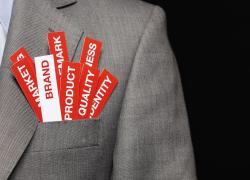Empowering your customer is a critical part of any modern brand marketing strategy.
Do you remember the Starbucks red cup fiasco?
Many people were upset that the cups were plain red and didn’t provide any holiday cheer. Starbucks was trying to avoid acknowledging any particular holiday in order to make all their customers happy, and it backfired.
So in 2017, they empowered their customers by having them create custom holiday inspired artwork on the classic red cup. This strategy allowed them to take a customer complaint and morph it into a customer success. They also showed this whole process with their promotional commercial. The commercial is footage showing “real” people drawing on the cups.
Empowering your customer isn’t just about involving them in your ads or marketing strategy, but it’s also about the power of a story.
Storytelling has been around since the dawn of time. It is an art form that will never die.
This is one of the many reasons it has become so popular in marketing. We live in a world where consumers have unprecedented access to each other and multiple platforms to tell their own story. Storytelling is exciting, magical, entertaining, and the best way to make an authentic connection with your audience.
How can we use this ancient art form to better strategize our marketing efforts? Let’s look at a few examples.
Apple Inc.
Apple does an amazing job of empowering their customers through the power of a story. For example, IOS recently came out with the “expressions” feature for text messaging. This allows you to send burst of balloons, fireworks, etc when you send a text.
When they launched this new feature they decided to tell a story in their ads. Do you remember the balloon commercial? The beauty of this ad is that it starts off with one lonely balloon that is traveling a great distance. Along the way it starts gathering more and more balloons and it mesmerizes the audience because we want to know where the red balloon is going and why it’s rallying more balloons.
As the balloon travels into the city, the sky fills with more and more balloons until they finally float into a woman’s apartment as she recieves a happy birthday text message. As she checks the text her screens fills with balloons bringing the whole concept full circle. This marketing strategy was brilliant, and a great example of storytelling. It is memorable, simple, and makes the customer feel special.
Coca Cola
Another iconic brand that is highly recognized for their marketing strategy is Coca Cola. They combined the powers of storytelling with the strategy of empowering their customers when they came out with the “names on a bottle” campaign.
One of the commercials from that campaign starts off with a girl going into a gas station to pick up two cokes. They empower the customer by having Jess play with her necklace, which says her name on it; before purchasing the coke that says “Jess.” As the commercial goes on Jess keeps coming back to the gas station to get more and more cokes to continue having fun during the day. Each time she brings back more and more people, showing off how each bottle can make a connection with a customer.
The story component comes in when they keep showing Chris, the gas station cashier, looking longingly at Jess. So now coke has you invested in the idea of personalizing your coke, and the consumer wants to know what will happen to Chris. This commercial builds and builds until eventually Jess buys a coke for Chris so that he can join in on the celebration.
Coke brilliantly ties in their overall marketing strategy with their hashtag #shareacoke along with their core brand messaging “Open Happiness.” This marketing strategy highlights every positive aspect of empowering your customer along with the power of storytelling.
So how can your business empower your customers? The key is making your customers the hero of your brand’s story. It’s a continual process that requires the right mindset and a lot of imagination, but here are few techniques to help you get started!
Tone of your messaging
![]()
Instead of saying things like: “This smartphone has the best low light camera on the market...”
...you would change it to say something like: “Never miss those special moments again. Now introducing the new low-light camera. The best quality for the best memories.”
Changing the tone of your messages to empower the customer makes that product more personal to the customer. It allows them to see how your product or service solves their problem. Rather than spouting off about the features of your product and expecting consumers make that leap themselves, use the right tone and messaging to make the value you offer obvious.
Know how to communicate with your audience
![]()
When creating a new product or business you should have an idea of your ideal customer. Thus, if you are trying to target a younger audience then you need to research how they communicate. Communicating with your customer on their terms is highly important. If you have poor communication then you won’t know what they need or how to improve your company.
Teens and young adults are very savvy with social media and tend to trust word of mouth. So it’s best to aim your marketing campaign to target those ways of communication.
If you have an older audience, they are more familiar with emails, and print materials, so you would focus on those forms of communication for your marketing campaign.
Credibility
![]()
A great way to empower your customers is through testimonials. A testimonial is when a customer talks about their experience with a client or business. Testimonials are a great positive way to establish credibility and trust in your company.
Another great way is to have online reviews for your product or business. There is an old saying that “knowledge is king” and customers use reviews to gain knowledge about your company. This outside information allows them to get an honest and unbiased opinion of your product or business. Therefore, it’s a great idea to encourage happy customers to submit a review.
Transparency
![]()
The number one quality that your company can provide is honesty. A great example of this is Sketch. They are constantly sending out emails and updates about their product. Most of these posts deal with current issues with the software. They acknowledge that there is an issue, but also provide a solution for how they will fix that issue. This puts a lot of consumers concerns at ease because they can see that Sketch knows what’s going on.
Creating that kind of transparency allows customers to build a relationship with your product or business. They can trust what you are doing because you are open and honest about it.
In Conclusion
It’s best to create an open, honest company that empowers the customers to make you better, because in the end, your product or business wouldn’t exist without the needs of the customers.
Through the power of storytelling, tone of messaging, credibility and transparency you can create a memorable, impactful marketing campaign.
Hopefully these tips will help your company to truly empower your customers.




